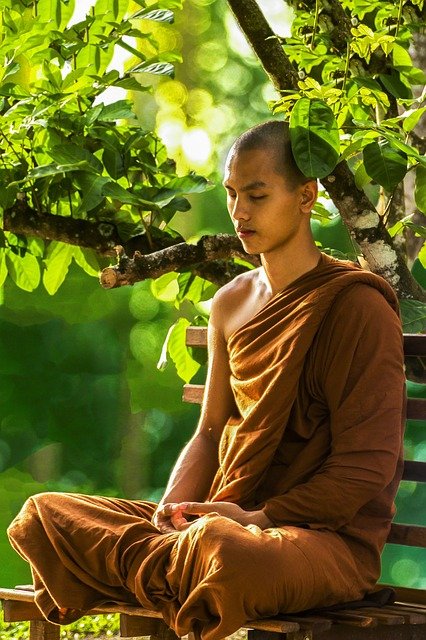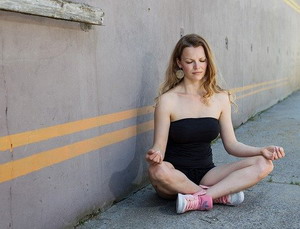
Meditation is a powerful technique that we can use to benefit our health. However, there is a lot of well-meaning but misguided fluff attached to the whole subject. I thought it would be useful to separate the fluff from the substance with this subject to help you decide whether meditation is right or useful to you.

Probably the first clarification to make concerns the association between meditation and spirituality. Some folks believe that meditating makes you spiritual – it doesn’t. Meditation is to spirituality as leg presses in the gym are to mountain climbing. Meditation builds certain mental muscles for quieting the mind like doing leg presses builds leg strength which can help you when you climb a mountain. Meditation is a tool and a skill. It builds the ability to control where your attention is placed. You can use meditation to improve your golf game just as much as opening your heart to God. Spirituality is found in what you use the meditation for, not the act of meditating.

Some of this confusion is due to how the first widespread meditation technique in America was promoted – Transcendental Meditation. Other than experimenting with various mental focus techniques when I was 16 and 17, my first daily meditation practice was TM, which I began when I was at UC Davis at the ripe old age of 18. I was specifically looking for a spiritual discipline, and the big selling point of TM was that “all you had to do was sit down for 20 minutes each day” to reach self-realization and eventual God-realization. Transcendental meditation was promoted as all you needed to become a spiritual giant… sounded good to me! Ah, the joyful naivete of youth.
Over the years much research has been done on TM’s impact on improving health. The results are impressive. It does wonderful things with heart health, immune health, mental health, and on and on. Nobody I knew became a spiritual giant from doing just TM daily. It is a powerful tool. Each type of meditation is a different tool for training different mental skills, just like the different exercises in the gym train different muscles. But spirituality is all about what you use the tool for, what you are trying to achieve.

So what is spirituality? Once you strip away all the stories from all the world’s religions and feel deeply into the spiritual roots behind each of them, spirituality comes down to the elimination of the belief in the separation of self from all that is. Spirituality is in embracing and appreciating the perfection of life as it is without the strain of our ego desires, fears, and judgments coming into play. In my life, I embrace this with the prayer “Show me.” I shut off my belief that I know anything and simply ask to be shown ‘what is’ in each moment. I chose the perfect profession for a spiritual discipline. Because humans are so infinitely complex, I never ‘know’ anything and have to constantly ask to be shown ‘what is’ and what to do.

Traditionally the purpose of meditation in a spiritual setting is to train the mind to stop listening to the ego and pay attention to something else. What that something else is defined by the type of meditation you are doing. Right off the bat, you can see the most immediate benefit of meditation – when you shut down (stop listening to) the ego, you shut down all the stress it generates. That is good news for the body on almost every level. The ego is a useful tool for survival, but it needs to be just an advisor, not running the ship. When it takes over, our health suffers. The ego is the center point of our belief in our separation from life. Ego insists that it is the center of everything and all of life should be the way it wants. Life isn’t that way, so ego pushes life away. Spirituality is sort of the opposite of our ego’s view of life.
Okay, so what are some of the types of meditation? That is not a simple question. There are about as many styles of meditation as there have been teachers (gurus) throughout history. I will focus on basic processes with the understanding that there are many variations on these themes.
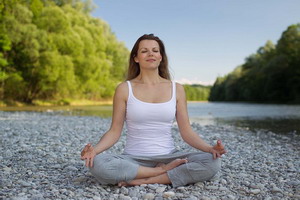
Quiet soft presence: here the idea is to just relax and be quiet. Just sit and be casually aware of what your senses are perceiving without focusing on anything in particular. Just let the awareness of each passing moment of sensation flow by without your participation, thoughts, or feelings. Mindfulness meditation is a good example of this.

Focused awareness: this is another quiet process, except here you keep your attention on something specific, such as chanting a word aloud or silently, repeating and invocation like a rosary, paying attention to the movement of your breath/ heartbeat, focusing on an image/object – real or imagined, focusing on an unknowable paradox (called a koan), focusing on an inner sound or light, focusing on one sound amidst a variety of sounds, focus on seeing completely without preconceptions. Within many religions, maintaining a continuous focus on the presence of God in your life is practiced, such as the Muslim muraqabah.
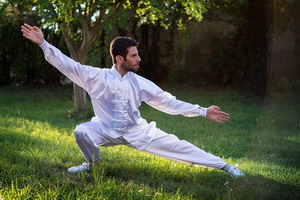
Movement meditation: most traditions have some sort of meditation based on movement, such as yoga, Sufi dancing, tribal dancing, Tantra, Kabuki, Natya Sastra dance, martial arts, Quigong, Tai Chi, Five Rhythms, Ballet, nature walking, fishing, in fact almost any movement can be done meditatively. The key to your focus right now is on your movements without thought or judgment.

Visual/ imaginative exercises: another type of meditation is following a set of progressive steps in a guided imaginative journey or experience. The objective is to immerse yourself in the experience using as many of your senses as possible in the imaginative experience. The amount of creative focus needed to pull in all your senses into the process roots you in the here and now and gives you access to numerous mental skills you might not know you have. Progressive relaxation, mind palace, and inner workshop are some of the techniques used in these processes.

Feeling awareness: here the goal is to focus on specific positive feelings such as compassion, gratitude, loving-kindness, or forgiveness. These feelings may simply be felt or felt in relation to some person, deity, or situation. Examples include Bhakti yoga, Buddhist metta meditation, Christian devotion, or even Heart Math.
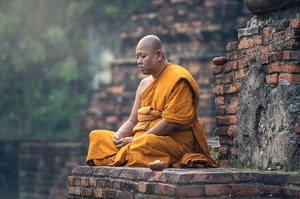
Contemplation: in this meditation style the objective is to focus on opening to the deeper meaning of some religious passage or spiritual principle. This is setting the mind aside along with any preconceptions and just asking to be shown what is. By quietly and humbly emptying your historical information you create room for a newer and deeper understanding of who you are and what reality is.

There are lots and lots of specifics and variations in meditation technique and style. The effects of each type are a little bit different and these differences can even be measured by recording brainwaves. Most techniques demonstrate health benefits by reducing stress and improving immune function. Because of the huge variety of techniques, everyone can find something that is suited for their temperament. As mentioned earlier, meditation is a skill for controlling the direction of your attention, which is powerful and useful in almost every endeavor in life. It is very useful when engaging in any sort of spiritual study, as letting go of the distractions of everyday life is essential. But it is equally useful for business, the arts, and just enjoying life.
So consider meditation. I find that it is essential participation for the sustaining of my health.
Take care,
David
